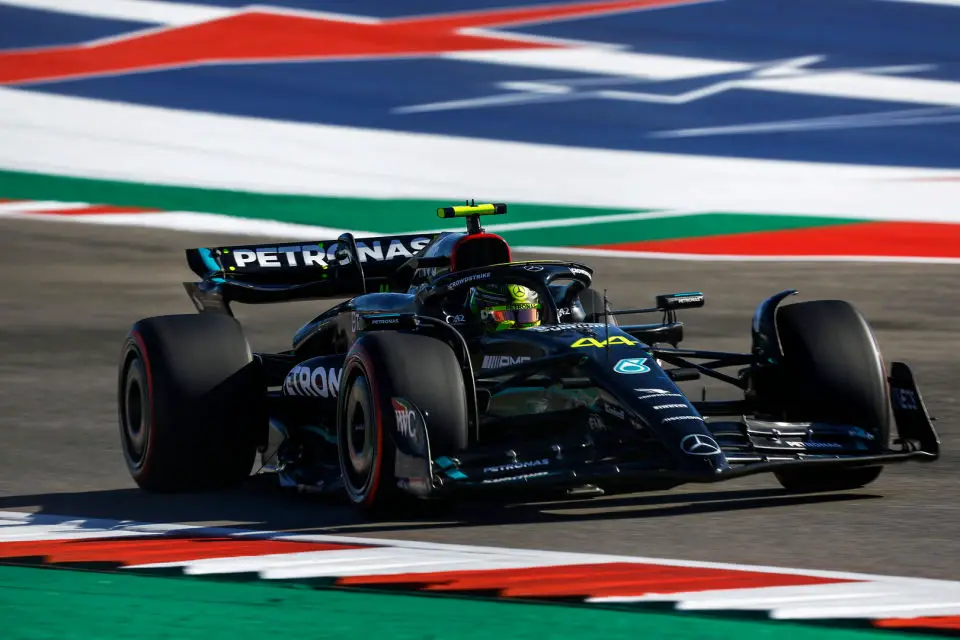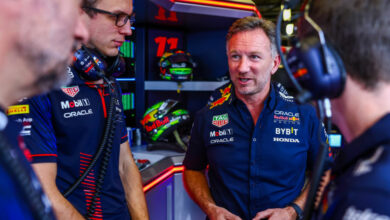F1 Plank Controversy: Drivers Demand Thorough Inspections Following US GP Debacle
After the disqualification of Lewis Hamilton and Charles Leclerc for excessive wear on their car’s skid blocks at the US GP, F1 drivers have called for more rigorous checks. The incident, resulting in a 50% fail rate in inspections, has sparked debate over the FIA’s scrutiny methods.
Key Takeaways:
- Widespread Concerns: The 50% failure rate at the US GP has raised questions among drivers about the FIA’s inspection processes, with many advocating for more comprehensive checks.
- Driver Insights: Nico Hulkenberg, Max Verstappen, Pierre Gasly, Lando Norris, and Alex Albon shared their views on the issue, highlighting the challenges of maintaining legal ride heights and the potential for wider implications across teams.
- The Sprint Format Impact: Several drivers, including Pierre Gasly, pointed out that the sprint weekend format contributed to the difficulty in adjusting ride heights, suggesting changes to improve the inspection process.


In the wake of recent events at the Austin Grand Prix, where Lewis Hamilton and Charles Leclerc faced disqualifications due to excessive wear on their car’s skid blocks, the F1 community is in a state of heightened scrutiny. The incident, which led to a startling 50% failure rate in the FIA’s inspections, has prompted drivers to question the governing body’s current methods of examination.
The disqualification of these top drivers has not only stirred controversy but has also led to a broader discussion about the fairness and thoroughness of the FIA’s inspection processes. Drivers are now openly questioning whether the FIA should have extended their checks to more cars, especially in light of the high failure rate observed.
During the media day for the Mexican Grand Prix, this issue was a hot topic among drivers. Haas driver Nico Hulkenberg voiced his concerns, noting the sensitivity of F1 cars to ride height and the particular challenges posed by tracks like Austin. He candidly admitted, “I might have been illegal myself,” highlighting the fine line drivers tread between optimization and rule infringement.
Max Verstappen, currently leading the championship, revealed that Red Bull chose to run their cars higher than usual to avoid penalties, acknowledging a performance cost. This strategy, born out of necessity due to the sprint weekend’s limited setup time, underlines the complex balancing act teams face.
Pierre Gasly highlighted the sprint setup’s impact on preparation time, noting the challenge of setting the correct ride height with limited data. He reminisced about his karting days, where post-race checks were standard, suggesting that F1 could benefit from a similar approach.
Lando Norris of McLaren agreed that more cars should have undergone inspection, especially considering the likelihood of both cars in a team being similarly set up. His remarks reflect a growing sentiment among drivers for more transparency and fairness in the inspection process.
Alex Albon echoed these sentiments, pointing out the marginal data teams have for setting ride heights. He suggested that while checking every car in every race might be excessive, the teammate of a disqualified driver should certainly be scrutinized.
This unfolding saga not only highlights the technical challenges teams face but also raises important questions about the consistency and thoroughness of regulatory practices in Formula 1. As the season progresses, the FIA’s response to these concerns will be closely watched by teams, drivers, and fans alike.



